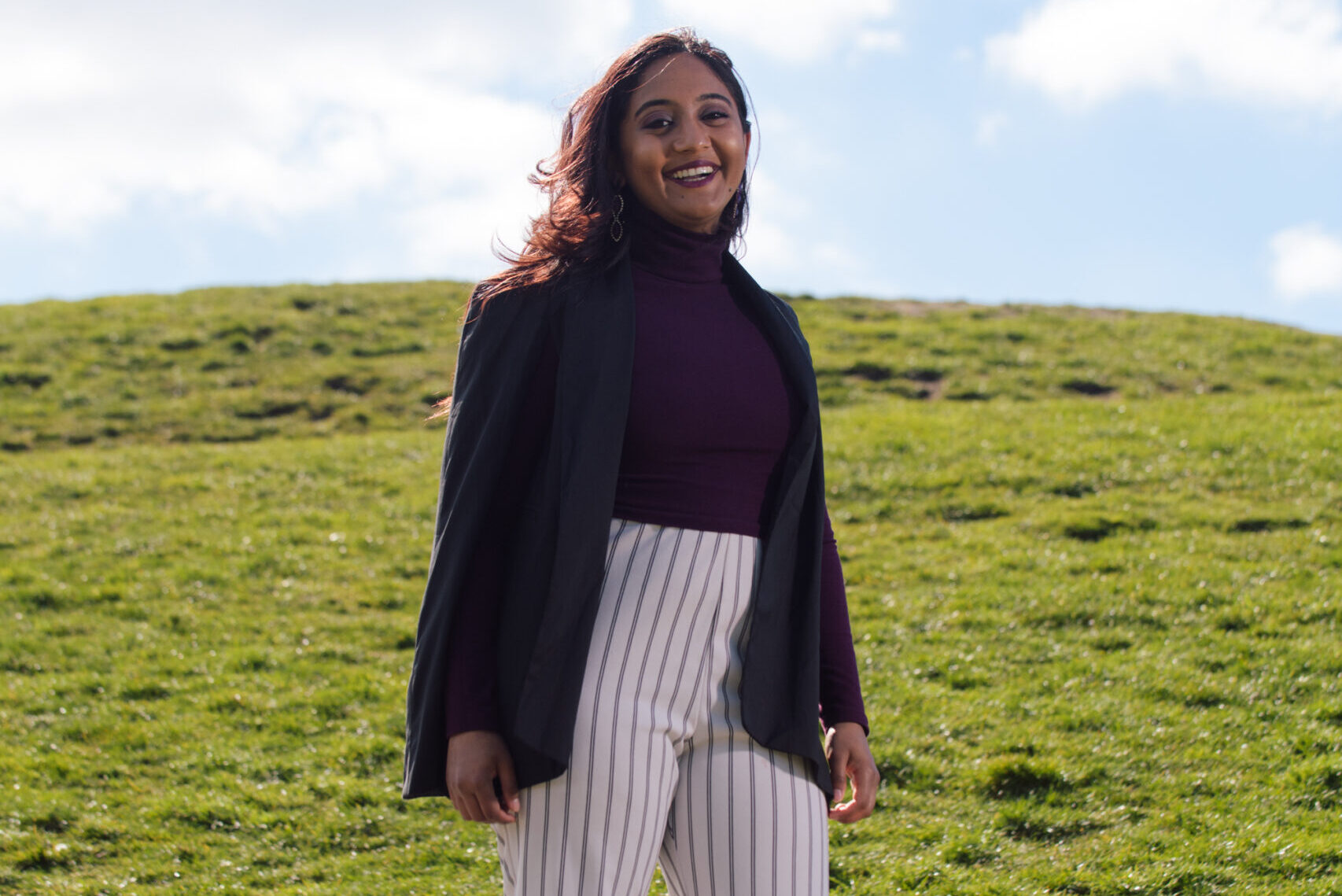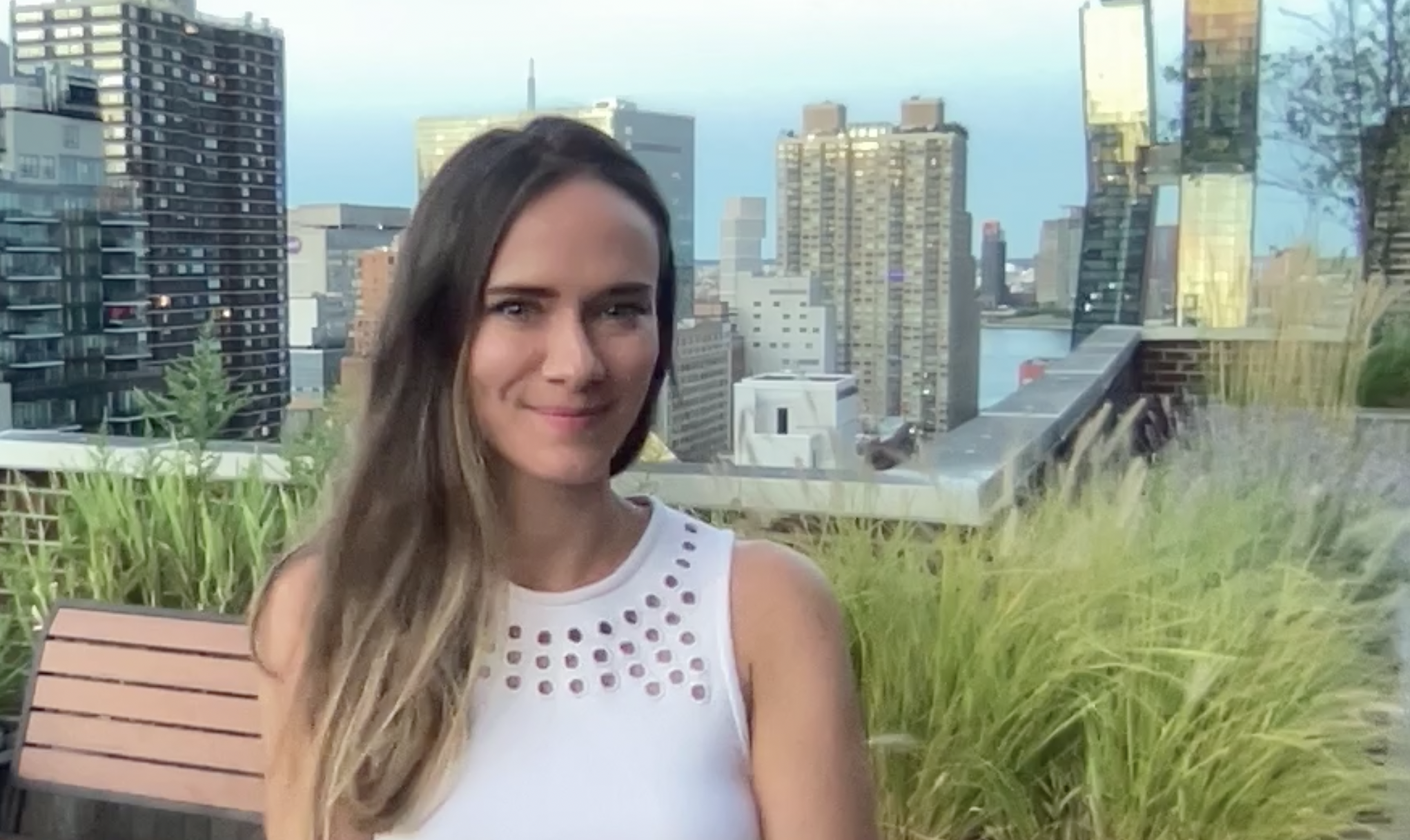The Climate-Friendly Life: Kristen, NYC
Hi, I’m Kristen. At this moment in time, I’m solidly a tote-slinging, glass-water-bottle-carrying, hold-the-plastic-utensils and walk-everywhere kind of gal. I’m involved with climate fighting nonprofits and have vowed to dedicate the rest of my career to supporting climate solutions. Right now, working to build and launch Gen E, an app that will make it easy for people to support and help protect the environment in their everyday lives, is how I feel I can best contribute to the cause of standing up for our planet. All that said, I struggle daily to make environmentally-friendly choices. It’s not easy navigating through the current societal systems and hard-wired habits I’ve acquired from growing up in America during peak consumerism. I’m a work in progress, but I feel good about the direction I’m heading: towards a decidedly climate-friendly life. Here’s where I’m at.
GETTING AROUND
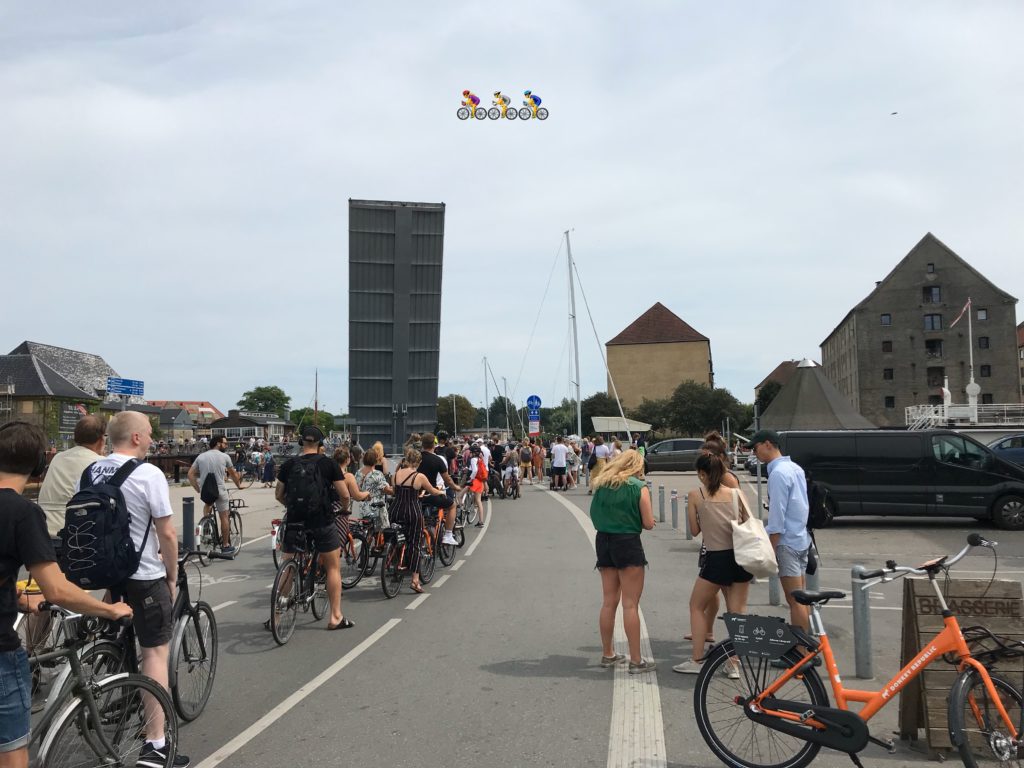
I live in NYC, so I’m able to walk nearly everywhere I need to go. And that’s exactly what I do. It’s a big reason I choose to live in a city – I love walking places. My general rule is that I’ll walk anywhere within a one hour radius, otherwise I’ll take the subway (er, I did in pre-Covid times). I’m very motivated to avoid cars due to their fossil-fueled engines (btw where’s the electric vehicle-only setting on car share apps?!), but I’ve always hated taking cars in the city. Why would I take a car when I can walk? It’s so inefficient to be in a car because there’s always traffic, it’s expensive, plus I get nauseous from all the abrupt stop and go. Same goes when I travel to other cities- walking is the best way to explore them.
Last year in Copenhagen I faced my fear of biking in a city and it was amazing! It opened up a whole new world of getting places faster while still in open air, plus it has a sense of nostalgia from being a kid, wild and free. Back in New York, due to a combo of feeling claustrophobic while in quarantine, and moving to Brooklyn where it feels more neighborhood-y and less chaotic, I recently decided it was time to hop on a bike. If NYC were a bike-friendly city, I’d likely have done it ages ago, but the thought alone scared me off. So far so good here in Brooklyn, where I’ve been able to get by during quarantine only on foot or on bike, but ultimately this city needs open streets, way less cars, and way more protected bike lanes so we can all feel safe riding around town.
TRAVEL
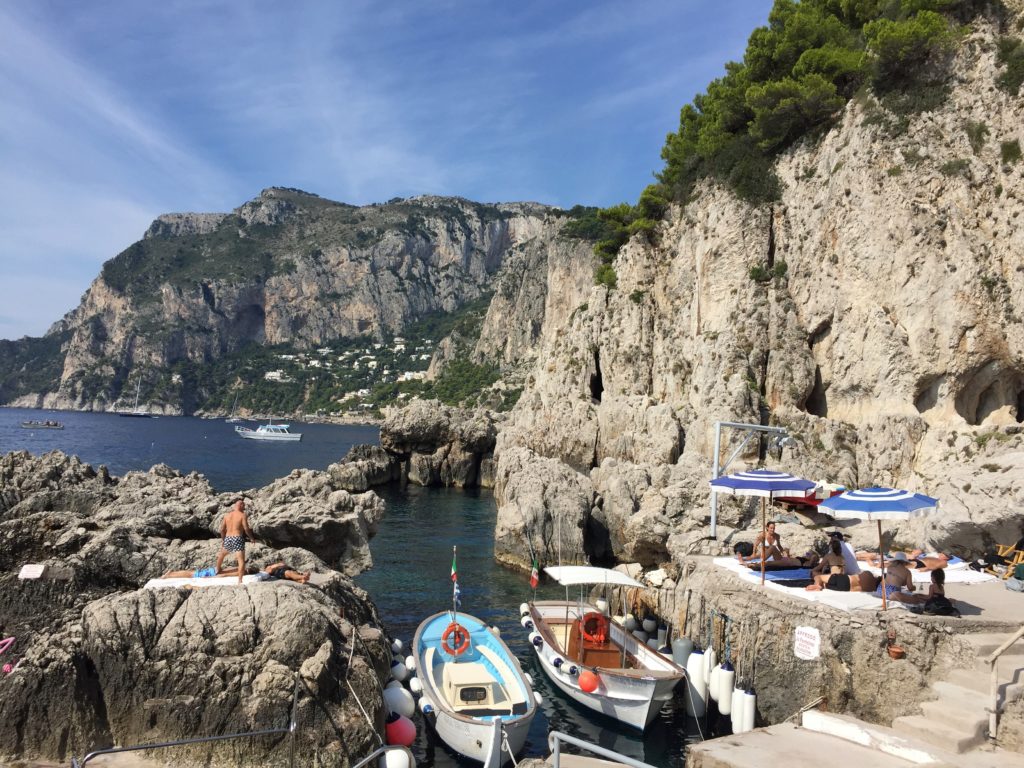
Seeing and experiencing different parts of the world is pretty much my favorite thing in life. Globally, air travel contributes 2.5% of carbon emissions, but is growing fast. And for people who fly a lot, it’s likely the worst offender in terms of their personal carbon footprint. While I applaud Greta and her epic sail across the Atlantic, I don’t see myself instituting a self-ban on flying. But I will do it more responsibly, which means minimizing my flights per year, flying coach (as if I had a choice!), and taking direct flights – all proven to have a lower carbon footprint. I otherwise live a fairly low-carbon life thanks to my walkable lifestyle, small apartment living, and not having kids. So taking a few flights per year is an equation that works for me right now on my path towards a climate-friendly life.
OUT AND ABOUT
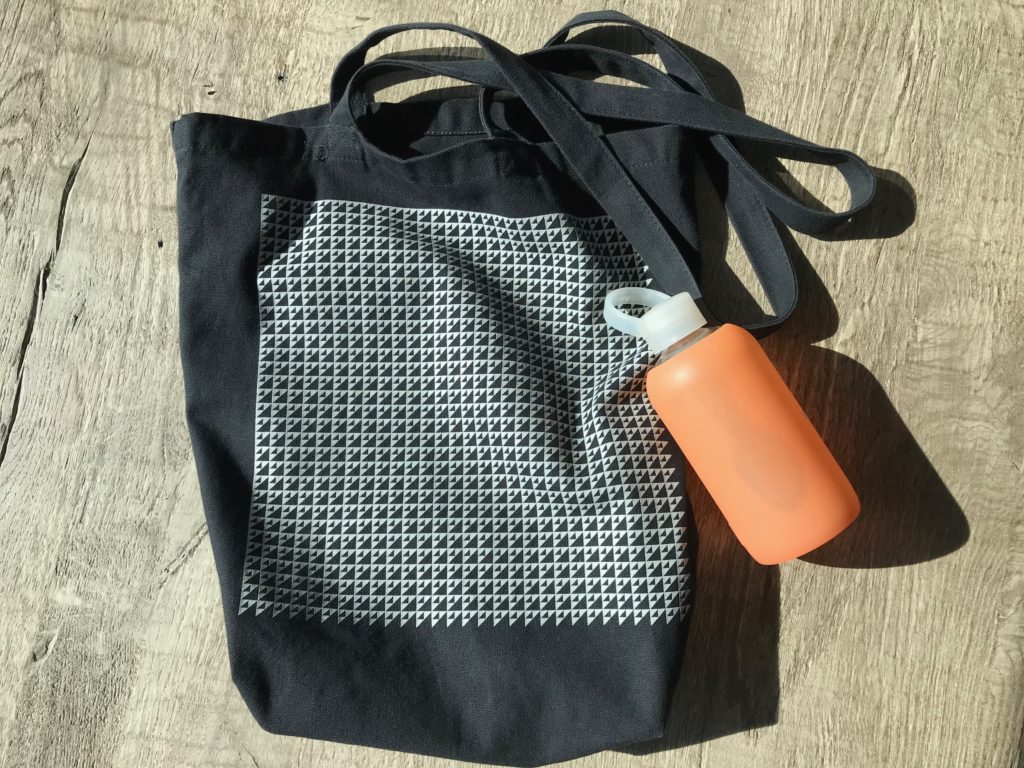
I never leave the house without a water bottle and a tote. This way, I’m always hydrated and have a bag to carry around whatever I might need – all without creating more waste. When I’m out walking around, I avoid buying to-go drinks which can be a bummer, as I do love a good specialty beverage. But a cold one inevitably comes in plastic x3 (cup, lid, straw), so I just don’t do it. I’ve been mentally preparing to start bringing my own portable vessel and asking cafes to fill it with my drink of choice.
Along those same lines, pre-Covid I was getting close to starting a BYO-Tupperware rule for when I go to restaurants. The doggy-bag dilemma is two-fold: it likely involves plastic waste, but not taking leftover food home creates food waste, which is another top contributor of greenhouse gases. I was at the tipping point of taking these next steps on my climate-friendly journey, before the pandemic. Now I’m way past caring about how it looks or if it’s annoying to ask if I can use my BYO-reusable. We are living in norm-shattering times and we must start pushing through the positive changes we need. Eliminating single-use plastics is a huge one.
FOOD
First there’s the meat issue. Adhering to a plant-based diet is a solid option to chip away at reducing that individual carbon footprint. And honestly, when I think about the deforestation caused by the cattle industry, I get very upset and think that maybe I could give up meat. But I’m not quite there yet. I seldom eat red meat, but I do love a good burger from time to time and enjoy seeking out the best one in my city. But it’s increasingly becoming a burden on my mind – can I be an environmentalist and still eat the occasional burger?
The problems with food are multi-layered and quite frankly a pain in the ass because to get this area right, you’ve gotta be on top of your game at all times. I’ve mentioned food waste which I’m trying harder to avoid at home. Growing up, my mom would always say ‘waste not, want not’ to make us eat everything on our plates, so I do have that ingrained in my brain. Still, I definitely need to improve in this area, as I do end up throwing away too much food.
And in talking about food, ya gotta talk about plastics again because it is so damn hard to completely avoid them, especially when grocery shopping and ordering delivery. The latter is a big source of distress for me, as food delivery is booming and therefore so is disposable packaging. I’ve made an effort to minimize my food ordering activity because of its inherent plastics problem. During quarantine, it’s an especially loaded topic, since I want to support local restaurants and eat great food, but also the planet shouldn’t suffer in the meantime. It’s a constant mental battle.
Then we have the grocery store, where I actively avoid plastic-packaged food as much as possible. Some things I’ve compromised on, like replacing better-tasting peanut butter in plastic tubs for the more natural glass-jarred variety. Some things I’ve begrudgingly given up on, like berries since they only come packaged in those damn plastic clam-shells. It’s infuriating to not have sustainable choices. But as diligent as I try to be, plastic inevitably finds its way home with me. So until there’s a nearby bulk grocer or I have outdoor space for a home garden, I’ll keep trying my best, which includes trying to remember to frequent a local Farmer’s Market that sets up once a week.
BUYING THINGS
I make a concerted effort to physically go out to a store to buy something I need vs ordering online. It’s win-win on many levels because it avoids the wasteful packaging, I get to walk (that city living!), support a neighborhood store, and I can’t buy more than I can carry. And no I don’t shop on Amazon and haven’t for several years. Not even in a pandemic.
As for what I buy – outside of the basics and the occasional thing I need (recently bought a bike helmet), I don’t really shop or buy things ‘for fun’ anymore. Any interest in shopping that I once had has completely evaporated from my being, which has made the journey a whole lot easier. This is wildly different from how I used to be, as I was once obsessed with fashion and beauty and consequently wasted a lot of time and money on both. Thankfully, with my shift in mindset and focus on the environment, I came to realize that I don’t need any more of either.
I’ve narrowed down my wardrobe and accessories to a core selection of classic, well made items, most of which should stand the test of time and wear. Everything else, I’ve been gradually selling or donating, which has proven to be a very cathartic exercise. Now when I look at a product of any kind, I can’t help but think about the negative environmental impacts caused throughout its lifecycle – especially when it comes to the extremely harmful and wasteful industries of fashion and beauty. So the notion of putting my own convenience, impulses, or vanity above all else has pretty much killed the act of shopping and accumulating stuff for me. Using my own transformation from fashionista to aspiring minimalist as an example, I believe we can and must shift as a culture to a more conscious form of consumerism. One where we buy drastically less, and focus on well-made, sustainable things we actually need and intend to use long-term.
PERSONAL HYGIENE
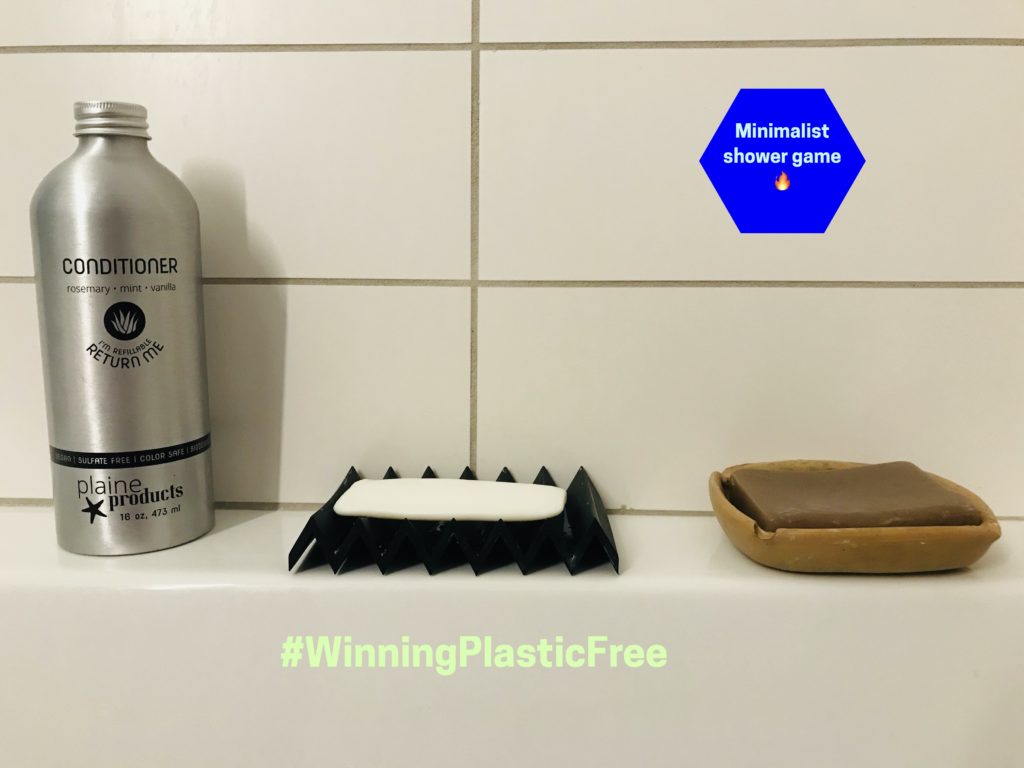
The bathroom is a plastic landmine. It’s everywhere and it’s inescapable. I’ve made progress for sure, but this is a tough area to tackle, since the beauty industry is so intertwined with plastic and toxins that there’s often no middle ground between planet-destroyer and full blown DIYer (that’s do-it-yourself). I’ve only just dipped my toe into DIY territory if you count buying a glass jar of coconut oil and using it as body oil? But I am finding some acceptable alternatives – all about the bar soaps!
One area I’m very proud of is my shower, which is a plastic-free zone. I’ve been a lifelong user of bar soap, so that was an easy win. And now I use bar shampoo which was a painless swap. I get a full suds, there’s no cap or bottle squeezing to deal with and it’s healthier for your hair. I haven’t found a bar conditioner that works, so I use this one that comes in an aluminum bottle and can be sent back and refilled! That’s pretty much the dream scenario of efficiency right there.
As for my skincare, I went nontoxic and non-bullshit long before the spell of plastic was broken in my brain, and it’s a happy coincidence that the brand I primarily use is all about glass bottles. Admittedly, my current face wash does come in a plastic bottle, but the bottle is made of 100% recycled plastic and I only need to replace it once a year. Still, since we know that virtually nothing actually gets recycled, I don’t feel confident that when I put my finished bottle in the recycling bin the loop will be closed. So unless they come out with a bar soap version, I’ll probably have to move along. I have recently kicked my face wipe habit, though, and replaced them with reusable cotton pads. I pour on some jojoba oil, wipe off the day, then throw it in the hamper, wash and repeat.
With makeup, I’ve majorly downsized from the old days of having an entire vanity grossly filled with product. Now it’s just half a shelf in my bathroom mirror cabinet. But when I finish that old stuff, I’ll need to figure out the near impossible task of finding the perfect combo of non-toxic, plastic-free, and all around perfect product I’m looking for. Maybe by then my vision of local stores that are essentially refilling stations for products that can go in refillable glass or aluminum bottles, will be realized.
HOUSEHOLD
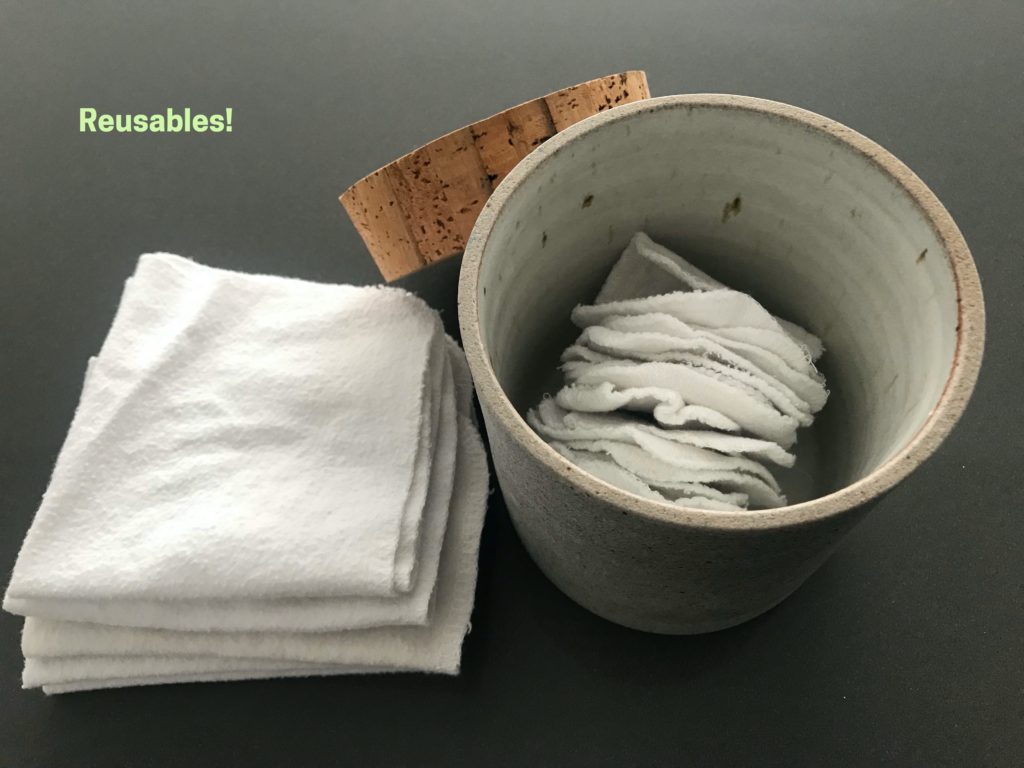
Somehow I went on way too long buying plastic bottles of fizzy water for the fridge – it was one of those things I just didn’t fully see until one day I did and gasped in horror (this notion is also the theme of our blog series ‘Oh Shit, That’s Plastic!’). So I promptly bought the at-home version with glass bottles and haven’t looked back since. Definitely one of those changes where I can’t believe I used to do it the old way plus I can feel the weight of the difference I’m making in avoiding bottles upon bottles of plastic every week.
Let’s talk toilet paper. Thanks to an NRDC campaign, I woke up to the fact that my previous go-to brand, Charmin, cuts down old-growth forests to make TP. That was and continues to be horrifying on many levels. So only the recycled stuff in this household! For laundry detergent, I wanted to get away from plastic, such is the theme here, and found that Whole Foods sells a private-label powdered version in a cardboard box in their stores. There’s a plastic bag inside that holds the powder, but it’s better than the alternative of a heavy duty plastic jug.
I’m in the process of trying to cancel paper towels from my life, but it’s a tough one. When thinking about cleaning something gross, my brain wants to throw out that thing I used to clean up with, which has always been a paper towel. Thinking back to being a kid, I remember there being old rags in the house used for cleaning surfaces. Not paper towels. Sometimes when I’m struggling with the disposable vs reusable conundrum for a particular situation, I think about what ‘they’ did in the old days, way back when people used to be resourceful and did not live in the throwaway culture we do now. In my opinion, this resourcefulness and reliance on reusables is a cultural concept we need to bring back if we’re going to turn this ship around. So on that note – I bought some reusable cloths that I mix in with my usage of recycled paper towels, and hopefully one day I’ll fully transition to using these and old towels to do the cleaning.
That’s my story for now…I’ll keep working on it, as I know many other like-minded people, businesses, and governments are too. The future is climate-friendly!


